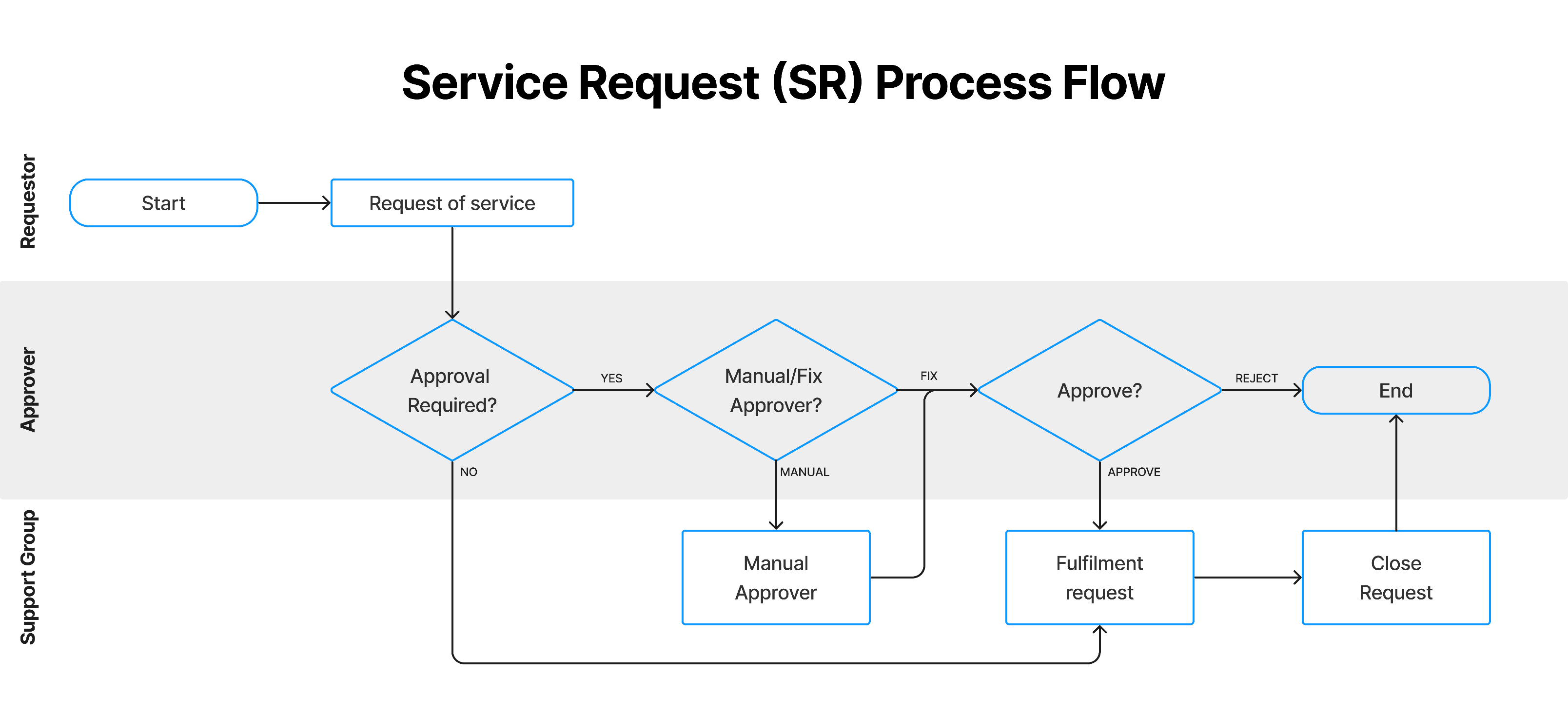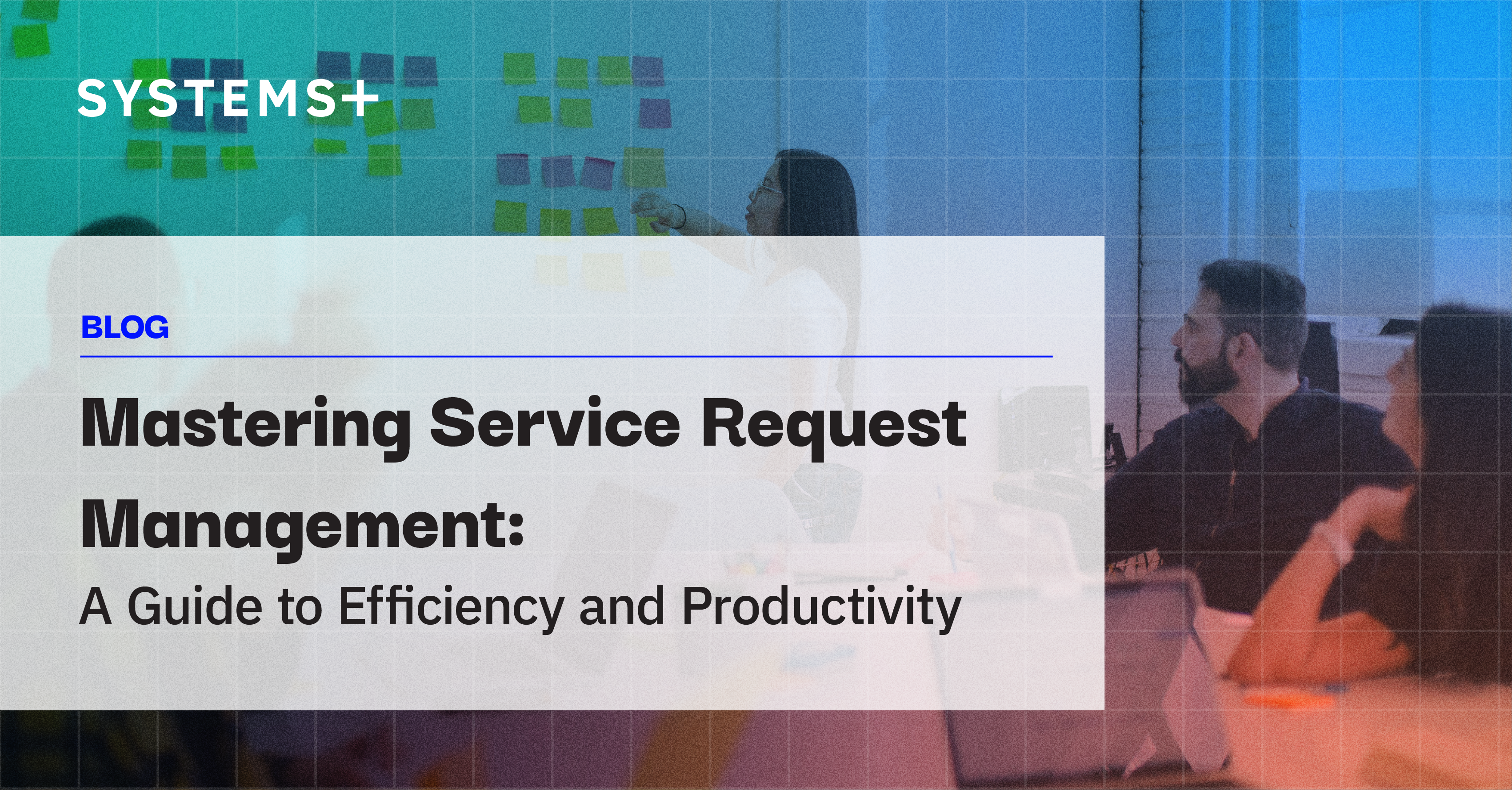Posted : June 28th, 2024
Author : Irfan Shaikh, Project Manager at Systems Plus
Do you feel swamped by an endless stream of service requests? Are your IT teams bogged down by repetitive tasks, limiting their ability to focus on strategic projects? You’re not alone. Many organizations grapple with inefficient Service Request Management (SRM) processes. However, a well-defined SRM process can revolutionize your operations by improving the user experience, boosting IT staff productivity, and fostering a more pleasant work environment.
Understanding Service Request Management
Service request management involves receiving, managing, and fulfilling user requests for IT services or IT access. These requests can range from simple password resets to complex software installations. An effective SRM process ensures these requests are handled efficiently and consistently, leading to faster resolutions and happier users.
A streamlined SRM process is not merely a technical necessity but a strategic asset. By ensuring that each request is properly managed, businesses can enhance user satisfaction, optimize resource allocation, and drive continuous improvement.
Benefits of Streamlined SRM
- Enhanced User Experience: Users can submit requests through various channels (self-service portal, email, phone) and receive timely updates on their status. This transparency and ease of access reduces frustration and improves overall satisfaction.
- Increased IT Staff Productivity: Automating routine tasks like password resets frees up IT staff to focus on strategic initiatives. By reducing the manual workload, IT professionals can engage in higher-value activities that drive innovation and business growth.
- Enhanced Service Delivery: Clear categorization and prioritization ensures that critical issues are addressed first. This structured approach helps in maintaining service levels and makes sure that urgent requests receive immediate attention, thereby minimizing downtime and enhancing operational efficiency.
- Improved Cost Efficiency: Streamlining processes and reducing manual work saves time and money. By leveraging automation and best practices, organizations can reduce operational costs, eliminate redundancies, and ensure that resources are used effectively.
Key Stages of SRM
1. Request Submission:
- User Submission: Users submit service requests through a defined channel, such as a service desk portal, email, or phone.
- Request Logging: The request is logged into the service management system with all the necessary details.
2. Categorization & Routing:
- Categorization: The request is categorized based on type, urgency, and priority.
- Assignment: The request is assigned to the appropriate team or individual for further action.
- Initial Assessment: A preliminary assessment is conducted to determine if the request requires approval or not.
3. Approval (Optional- based on the service request):
- Approval Routing: The request is routed to the appropriate approvers based on predefined workflows.
- Approve/Reject: Approvers review the request details and either approve or reject the request. This may involve multiple levels of approval depending on the complexity of the request.
- Communication/Notification: The user is informed of the approval or rejection, along with any relevant details or next steps.
4. Request Fulfillment:
- Assignment: Approved requests are assigned to the relevant team or personnel for fulfillment.
- Execution: The team works on fulfilling the request according to the agreed-upon service levels and timelines.
- Monitoring and Updates: Progress is monitored, and updates are provided to the user as needed.
5. Closure:
The request is officially closed in the service management system, and any relevant documentation is updated and notify user via email or tool.

Tips for Optimizing SRM
- Implement a Self-Service Portal: Empower users to resolve common issues themselves through a knowledge base of articles and FAQs.
- Automate Routine Tasks: Automate repetitive tasks like password resets to free up IT staff for more complex issues.
- Set Clear Service Level Agreements (SLAs): Establish clear timeframes for resolving different types of service requests.
- Track and Analyze Data: Use data from your SRM system to identify trends and areas for improvement.
- Standardize Processes: Use standardized templates and forms to ensure consistent data collection and request handling. Establish clear, predefined workflows for different types of requests to ensure uniform processing.
- Integrate with Other Systems: Integrate the service request management system with other IT systems (e.g., asset management, incident management) to streamline workflows and data sharing.
Conclusion
Implementing a well-defined and efficient service request management process can significantly enhance user experience, boost IT staff productivity, and ensure your organization delivers top-notch IT services. Take control of the service request chaos and empower your IT team to achieve greater success.
To assess, evaluate, and enhance your ITSM and SRM maturity, you can take the ITSM Maturity Assessment and get your unique score along with a practical plan-of-action. Alternatively, you can also connect with our ITSM experts for a detailed consultation.







